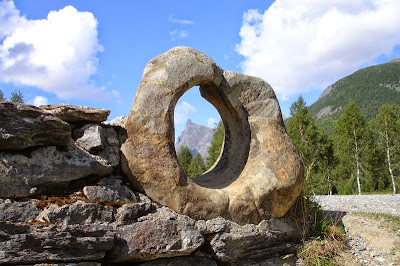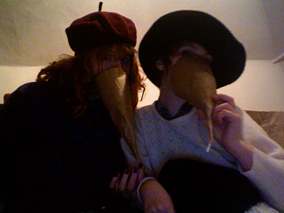So without further ado! I read about an ancient stone site in Cornwall, called the Mêl-An-Tol. The site comprises four stones, one of which is big and round with a hole in the middle (so basically, a giant, Bronze Age Polo!). The site is thought to be about 3,500 years old. The stone has many magical powers attributed to it, one of which was to aid fertility. By passing a set number of times (often 3 or 9) through the stone on a full moon night, a woman's fertility was said to be boosted. Farmers could also use the stone to increase their bounty.
 |
| The Mel-An-Tol - photograph from http://www.cornwalls.co.uk/history/sites/men_an_tol.htm |
Now the Norway bit! A few years ago, my hubby-to-be, family and I were on a road trip around his home territory in Western Norway. We passed by a big stone with a hole in the middle, with a fertility story attached to it. It was said if a bride-to-be could pass through the stone, all was in order, and if she couldn't... she was probably pregnant! (Maybe because her big bun-in-the-oven belly would get stuck?!)... The stone is called Giftesteinen or Jomfrusteinen (the marriage stone, or virgin stone), and lies in Hornindal.
 |
| Giftesteinen / Jomfrusteinen - photograph from http://www.nordfjord.no/no/Produkt/?TLp=227585&view=image |
Aren't they both wonderful? Just humming with magical ancient energy! As an interesting aside - thinking about magical stones with holes in - there are also hag stones (which have many alternative names too, see below!) in England, small stones with holes in, which are said to hold magical faery powers.
 |
| A hag stone / witch stone / serpent egg / snake egg / Glain Neidr in Wales / Gloine nan Druidh (Druid´s Glass) in Scottish Gaelic - photograph from wikipedia |








No comments:
Post a Comment